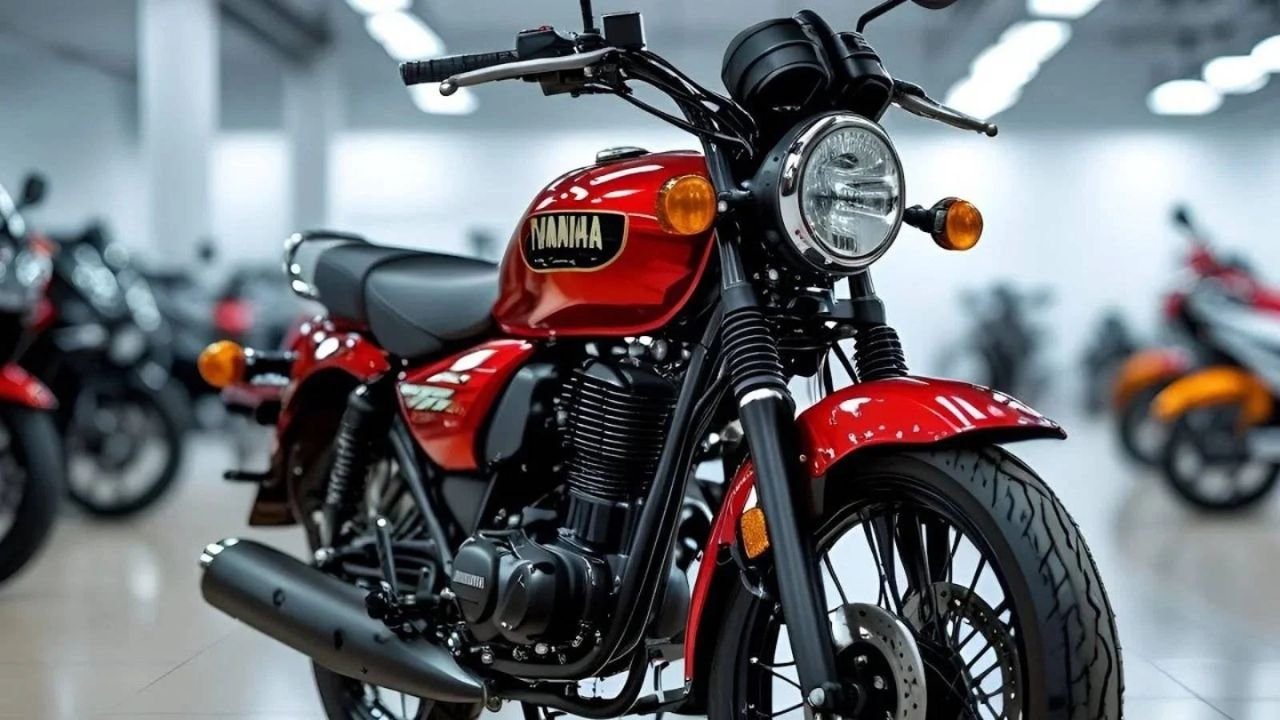If there’s one motorcycle that can make Indian bikers’ eyes light up even decades after it disappeared from showrooms, it’s the Yamaha RX100. This machine is not just a two-wheeler — it’s a living legend. It shaped a whole era of motorcycling in India during the 1980s and 90s, creating a cult following that still refuses to fade.
Back then, the Yamaha RX100 wasn’t about flashy digital consoles, Bluetooth, or riding modes. It was about raw, unfiltered biking pleasure — the kind you felt in your bones and heard in that unforgettable two-stroke exhaust note. For countless riders, owning a Yamaha RX100 was a dream and a rite of passage into adulthood.
Today, the name has resurfaced with whispers of a revival. Whether it’s nostalgia or the thrill factor, the Yamaha RX100 continues to dominate motorcycle conversations. Let’s dive into what makes this bike so iconic, why it’s still loved, and what it means for today’s riders.
Yamaha RX100 – Key Specifications and Highlights
| Feature | Details |
|---|---|
| Engine | 98cc, air-cooled, 2-stroke |
| Power | Around 11 HP |
| Gearbox | 4-speed manual |
| Weight | Approx. 100 kg |
| Top Speed | About 100 km/h |
| Brakes | Front and rear drum brakes |
| Mileage | 25–30 km/l (depends on usage/tuning) |
| Suspension | Telescopic forks, twin rear shocks |
| Production Years | 1985–1996 |
| Legacy | Cult status for sound & performance |
What Made the Yamaha RX100 Special?
The Yamaha RX100 was never just about numbers on a spec sheet. It was about the way those numbers came together on the road. With just a 98cc engine, it still delivered acceleration that put bigger bikes to shame at the time. Its crisp throttle response and lightning-fast pickup made it a thrill machine.
But the magic wasn’t only in speed. It was in the sound — that high-pitched, raspy “ting-ting-ting” exhaust note that announced your arrival long before anyone saw you. For many, hearing a Yamaha RX100 was enough to turn their heads and smile.
Design-wise, the RX100 kept things simple. No unnecessary plastics, no complicated electronics — just a clean round headlamp, metal fenders, and a compact fuel tank with classic Yamaha branding. Even today, its design looks retro yet ageless.
Performance That Changed the Game
When the Yamaha RX100 launched in India, most bikes were slow, heavy, and built purely for mileage. Yamaha decided to do things differently. They introduced a lightweight frame with a peppy two-stroke engine, creating an unbeatable power-to-weight ratio.
The result? A bike that could do 0–60 km/h in under 7 seconds — mind-blowing for its time. Street racers and college youth loved it. The 4-speed gearbox felt tight and precise, making every gear shift satisfying. It wasn’t just commuting; it was an experience.
Also Read – Bajaj Launches the New Platina 125: A Budget-Friendly Commuter with Outstanding Mileage
Handling, Comfort, and Suspension
The Yamaha RX100 weighed just around 100 kg, which made it incredibly nimble. It was a joy to weave through traffic or lean into corners. The telescopic front suspension and twin rear shock absorbers were simple but perfectly tuned for Indian roads, handling potholes and speed breakers without losing stability.
Whether you were riding in crowded city lanes or cruising on an empty highway, the RX100 felt connected to the rider. Its low seat height made it accessible to all kinds of riders, from teenagers to experienced bikers.
The Cult Legacy of the Yamaha RX100
Even after Yamaha stopped production in 1996 due to stricter emission norms, the Yamaha RX100 refused to fade into history. Instead, it became a collector’s dream. Bike enthusiasts across India still hunt for old models, restoring them with painstaking care.
For many, the RX100 isn’t just a motorcycle — it’s a piece of youth, a symbol of rebellion, and a reminder of a simpler time when the open road was all that mattered. Restoration garages across India still keep the RX100 spirit alive by sourcing original parts and reviving the bike to showroom condition.
Racing Roots and Modding Culture
The Yamaha RX100 quickly became a favourite among modifiers and racers. Thanks to its simple mechanics, tuners could extract unbelievable performance from the tiny 98cc engine. With cylinder porting, expansion chambers, and carburetor upgrades, some RX100s could exceed 120 km/h — unheard of for its segment.
Street races, drag strips, and rally events in the 90s often featured heavily modified RX100s outrunning much larger motorcycles. This tuning culture added another layer to its legend, making it a symbol of raw speed and engineering creativity.
Can You Still Ride a Yamaha RX100 Today?
Absolutely — but with some effort. Finding a well-maintained Yamaha RX100 can be challenging, and prices vary based on condition. A pristine original can fetch ₹70,000 to ₹1.5 lakh, while rare colour variants or fully restored models can go even higher.
Spare parts availability is mixed. Some are still produced by aftermarket suppliers, while others need to be sourced from old stock or imports. Maintaining an RX100 also means more frequent servicing compared to modern bikes — but for passionate owners, it’s worth every rupee.
Yamaha RX100 in Modern Times
While a direct two-stroke comeback is unlikely due to strict BS6 emission norms, Yamaha has hinted at reviving the RX name with a four-stroke engine. Purists argue that without the original engine’s sound and punch, it won’t be the same, but there’s no doubt that the name alone will attract massive interest.
Even if the new version arrives, the original Yamaha RX100 will remain the benchmark — the machine that started it all.
FAQs About the Yamaha RX100
1. Why was the Yamaha RX100 discontinued?
It was phased out in 1996 because its two-stroke engine couldn’t meet new emission regulations.
2. Is the Yamaha RX100 still road legal?
Yes, as long as it’s registered, insured, and passes pollution checks.
3. What mileage does it offer?
Typically 25–30 km/l, depending on riding habits and tuning.
4. Is it worth buying today?
For collectors and vintage lovers, yes. It’s an appreciating asset with unmatched charm.
5. Will Yamaha bring it back?
A modern four-stroke version is possible, but the original’s soul will be hard to replicate.
Final Thoughts: Yamaha RX100 – A Legend That Refuses to Die
The Yamaha RX100 is more than just a motorcycle from the past — it’s a cultural icon. It represents an era when biking was pure, simple, and thrilling. Even decades later, its performance, design, and sound remain unmatched in the hearts of enthusiasts.
For those lucky enough to own one, it’s a badge of pride. For those still dreaming, the search goes on. Whether Yamaha revives it or not, the RX100 will always be remembered as the king of the streets — a true legend that played its drum in style.
If you’ve ever felt the wind in your hair while riding a Yamaha RX100, you know that no other bike can match that feeling. And if you haven’t yet, maybe it’s time to find one and make your own memories with this timeless machine.
Some Important Link
| Download News APP | Click Here |
| WhatsApp Group | Click Here |
| Home Page | Click Here |





